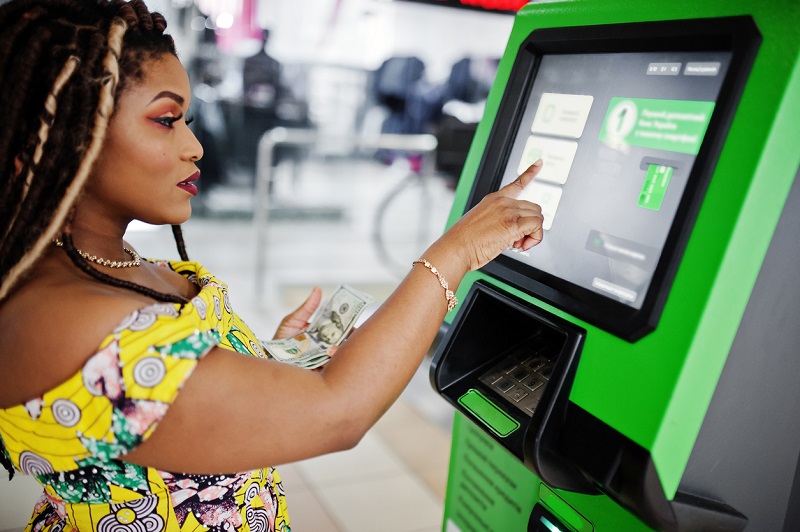The average person will use a kiosk daily, many without thinking about it. They have now become a fast solution for ticket dispensation, information sources and even ordering at fast food chains. Today we will discuss how these kiosks work and what their purpose is in assisting you in your day to day life.
What does a kiosk do for its users?

A kiosk provides a self-reliant base for the user. It allows a user to engage with it on their own terms, allowing them to accomplish several tasks that previously were delegated to personnel.
Although it may seem less-friendly, kiosks help to provide a platform that is both efficient as well as more comfortable to those with social anxiety towards speaking to strangers.
What industries use kiosks
The list of industries that utilize kiosks is fast growing, the most notable examples are listed below.
- Healthcare-Healthcare uses information kiosks to assist with patient check-in, to track patient health records and in other cases, to handle payments. This frees up the staff to assist with more urgent matters.
- Hospitality-Hospitality utilizes information kiosks to present services or nearby attractions to their guests. They are also used to book rooms or reservations for services like the spa or gym.
- Education-Information kiosks at schools are used for scheduling, wayfinding and for cataloguing pertinent information such as school transfers or application assistance.
- Retail -Retail companies employ information kiosks to show current stock or availability of a product. In some cases, these kiosks can also act as an intermediary and allow purchase of retail goods as well.
- Fast Food-Fast food restaurants employ payment kiosks so that you can order food and pay for it either at the kiosk itself or at the front of the line when your order is ready.
- Corporate-Corporate companies use a wide variety of payment kiosks for exchanging vendor goods such as extra computer peripherals.
- Transportation-Transportation companies utilize payment kiosks for handling ticket exchanges.
- Utility -Utility companies such as water and electric use payment kiosks to handle bill payments
- Government -Government buildings employ payment kiosks for handling parking ticket exchanges or for payment of a pre-existing fee or fine
How Kiosks Work
In the simplest terms, a kiosk is placed in the world, in a widely visible area. After that, the kiosk performs its function, whether it is through automation of a transaction or promoting a brand. It is because of this that it is important that a kiosk be placed in an area of heavy foot traffic to maximize its potential and visibility.
1. They are designed
A kiosk is designed with function in mind, as a result, the most important point that must be established is where the kiosk is placed. If it is placed in a small office, then it needs to be the size of a tablet or something portable. If it is placed outdoors, it needs to be robust and have waterproof shielding so it can withstand the elements. Where the kiosk is placed will determine how big and how complex the kiosk should be designed as.
2. They are manufactured
After the design stage, and the individuals needs are established, it is time to manufacture the kiosk. Kiosks are manufactured by a number of different companies, usually through contracts and other agreements. These companies typically only deal in bulk orders, so it is best to have a generally large order when approaching these companies for your kiosk specs.
3. Kiosk Software is developed for industry & tasks
After the shell or physical kiosk is constructed, the most expensive portion of purchasing a kiosk is software. Software dictates every function of the kiosk, allowing it to provide information as well as engage with NFC payment options. This software can be used to handle a wide variety of tasks, though it is important to keep this software up to date so that it’s tasks and functions are kept to a high standard.
4. Marketing and placement of kiosks
Now, with the kiosk constructed, it is time to place them in the hands of your users. The easiest way to go about this is to look at what kind of kiosk you have. Depending on the size and purpose of the kiosk, this will ultimately determine how it is used and where it should be placed. If you place a digital kiosk in a large shopping mall, word of mouth and foot traffic will accomplish your branding, so it is important to display your kiosks within prominent reach of themselves so they are always on hand for the customer’s convenience.
5. User interfaces with Software
With the kiosk installed, a user simply navigates through it’s software to accomplish things such as obtaining new information or purchasing a good.
6. Software connects user with company database
After the user utilizes the kiosk to fulfill a task, the data is then passed onto the company to better improve their product. The ultimate goal here is create an environment that is as streamlined as possible for the consumer.
7. Tasks are streamlined
With information being gathered, this allows the company to run more efficiently thanks to the data gathered. Kiosks provide this data without the need of personnel on site and it allows the consumer more freedom in dictating their own purchasing needs. This loop helps to keep things streamlined around the clock with systems constantly improving as a result.
Why are kiosks important for your business
Kiosks provide a vital service by automating functions and streamlining the user experience. Although the initial investment may seem sleek, it is easily more cost-effective in the long run and engages the consumer. As an added bonus, investing in a kiosk helps to create a more modern look for your business, creating a better public image without the need of additional ad space.

